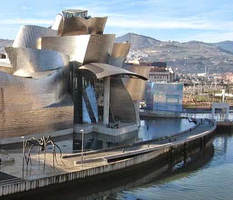
LAST September Bass Coast Shire Council accepted the Robert Smith collection, which includes works by Noel Counihan, Daumier, T.S. Gill, Rembrandt and Picasso. This collection, valued at around $1.2 million, along with some 200 artworks already held by the shire, places great responsibility on the council to provide a gallery to store and display the collection under the best curatorial conditions.
Discussion to date suggests that the council is considering adapting the old Wonthaggi Library or another space for this purpose. The committee of artists, signatories to this paper, proposes that only a new, purpose-built gallery will protect and do justice to this collection and adequately serve the community and visitors to the region over the long term.
Surveys by the Australian Bureau of Statistics consistently reveal that roughly twice as many Australians involve themselves in arts and cultural activities as in sport. While few would argue against a council’s responsibility to provide or encourage community sporting facilities, we believe the same imperative applies to arts and cultural venues and activities.
Victoria has 18 regional galleries, all owned and operated by local councils, based mainly in major regional centres. Wonthaggi’s recent growth surge into becoming the major regional centre for Bass Coast and South Gippsland regions is an echo of the history of those larger Victorian towns and cities.
While some say a regional gallery is the jewel in the crown of a region, we would argue that it is an essential component of a mature community infrastructure.
Our closest regional galleries, Latrobe Regional Gallery at Morwell and Gippsland Regional Gallery in Sale, run comprehensive exhibition and educational programs but are too distant to be seen as regularly accessible to the South Gippsland communities.
Victoria’s 18 regional galleries operate under the umbrella of the Public Galleries Association of Victoria and are eligible for grants and funding from state and Commonwealth sources.
Philanthropic donations to established arts institutions are not uncommon.
The establishment of a gallery society can be a great benefit as it is often the source of a volunteer group to assist in running the gallery (in kind) and can also establish special fund-raising events.
MONA in Hobart, the sensational Guggenheim Museum in Bilbao, Spain, or, more modestly, the TarraWarra Museum of Art in the Yarra Valley all prove the point that an art gallery with a touch of architectural “Wow!”, an ever-changing exhibition program, easy access, parking, perhaps a café/restaurant and a gallery shop, can become a major tourist drawcard and help to transform a local economy.
Surrounding open space can allow for the exhibition of outdoor sculpture and a picnic atmosphere – a place to be.
The City of Shepparton has recently announced the winner of the competition for the design of their new regional gallery.
A gallery collection constitutes a continual source for ongoing, rotating exhibitions. Variety and range are important to keep people coming back. A major aspect of the regional gallery system is their ability to accept (and instigate) national and international travelling exhibitions. This is the case because all Victoria’s regional galleries comply with the high standards required to securely store, mount and exhibit art in climate-controlled conditions and with professional curatorial oversight. This is a standard essential to any gallery proposals for Bass Coast Shire.
An adequately staffed gallery with the appropriate facilities can become another learning centre for both adult education activities and school groups. Most regional galleries have extensive programs using both staff and volunteers.
A regional gallery also becomes a centre for amateur arts groups and most have a specific community access gallery which exhibits crafts, the work of local amateur artists or early stage professionals.
Regional galleries around Australia have long been sponsors of or associated with visual arts competitions, often with acquisitive awards. The resulting exhibition is usually very keenly attended by locals and visitors and adds national credibility to the gallery, its staff and the region.
The addition of winning works to the gallery’s collection over time can push that collection into interesting new directions. For example, an outdoor sculpture competition could result in award-winning works being positioned in key sites around the region, extending the gallery’s collection and influence deep into the community.
This region has established a reputation for its arts and culture through its plethora of private/commercial galleries, its food/wine/coffee culture, its music venues and in particular an amazing concentration of professional practising artists living and working in and around Bass Coast and South Gippsland shires. The region is ready to benefit from the establishment of a regional art gallery and all it offers.
It is widely understood that an adequate gallery is needed to hold, protect and display the Robert Smith collection and other items. The aspirations outlined here align perfectly with the shire’s arts and culture plan for 2015-19.
What the signatories to this paper advocate, however, is that this remarkable donation of important artwork should be the impetus for thinking about what is inevitable – the establishment of a new, purpose-built, fully functioning and architecturally exciting regional gallery. State and federal funding opportunities should be investigated.
We the undersigned local professional visual artists and arts administrators advocate that the council begin the process.
John Adam
Robert Barron
Peter Cole
Wendy Crellin
Grant Flather
Ken Griffiths
Mandy Gunn
Adrian Johnston
Debra LeCerf
Beverley Leversha
Dennis Leversha
Kevin Mortensen
John Mutsaers
Marian Quigley
Susan Purdy
Mark Reyment
Paul Satchell
Wendy Satchell
Heather Shimmen
Kerry Spokes
Colin Suggett
Helen Wilkinson